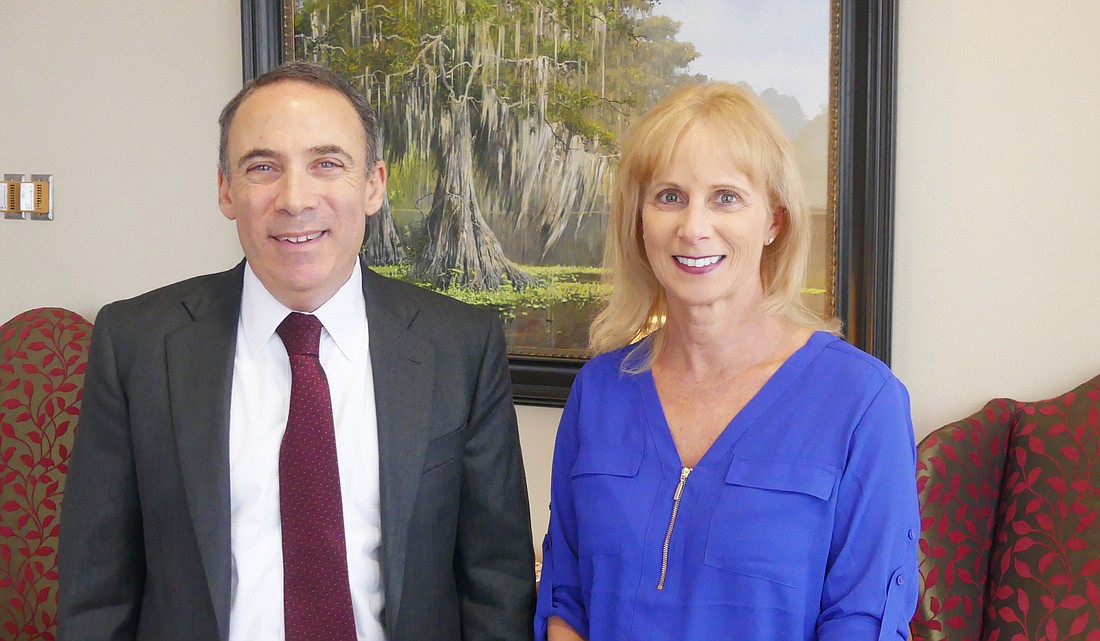
It’s common for a law firm to call on medical experts for advice and counsel when the firm is representing a client that’s a health care provider.
What’s not common is for a law firm to have a shareholder attorney who’s also an M.D. who works with a staff health care risk manager who’s also a registered nurse and certified legal nurse consultant.
But that’s what’s been in place at Smith Hulsey & Busey for 10 years.
Dr. Andrew Sauer and Traci King bring to their second professional careers a combined 55 years of hospital experience to the firm’s medical malpractice defense practice.
“I get to work in areas of medicine I wouldn’t come in contact with in my specialty,” said Sauer, a graduate of Northwestern University Feinberg School of Medicine and Florida Coastal School of Law. He’s a board-certified pediatric emergency physician at Wolfson Children’s Hospital when he’s not working with a client.
King, a graduate of the University of North Florida Brooks School of Nursing, specialized in adult critical care nursing before she joined the law firm.
“What I did then lends itself well to what I do here. It requires critical thinking and every case is different. That’s what I enjoyed about nursing,” she said.
Sauer said he and King are the firm’s “legal rapid response team” and often begin consulting with a client before there’s litigation.
“Ten years ago, law firms responded to a suit when it was filed,” he said.
“Now the trend is to get involved proactively. When a risk manager or clinical personnel at a health care client has a concern about a patient’s case that may have legal implications, they call us,” he said.
Another factor that has changed in medicine and the law in the past decade is how medical records are created and maintained. The handwritten patient chart has been replaced by technology. That has changed how cases are investigated and litigated.
“Ten years ago, the medical record was a narrative. It told a story. Now it’s more data-driven. That raises the benefit of early involvement,” said Sauer.
The scope of medical malpractice lawsuits also has changed, King said. When she began her career, evaluation of patient care was focused almost exclusively on physicians and surgeons, but nurses now are more involved in patient care.
“It used to be rare for a nurse to be subpoenaed in a case – much less named. That’s gone out the window,” King said.
Sauer and King predict that as the intersection of medicine and the law continues to evolve, they will become more proactive, influencing the process as early as before a patient is admitted or treated.
“I believe we can help hospitals draft documents that will better inform patients and protect the hospital,” said King.
Sauer said he’s confident one element of the connection between his practice at the hospital and his practice at the law firm won’t change.
“There’s never a dull day there and there’s never a dull day here,” he said.